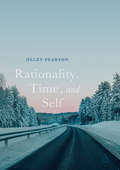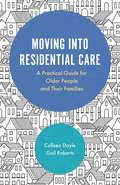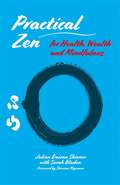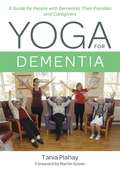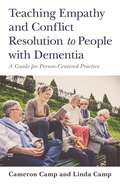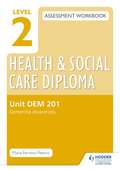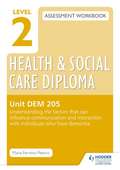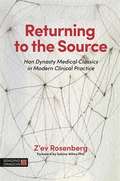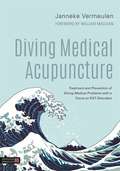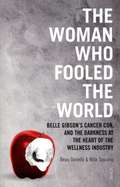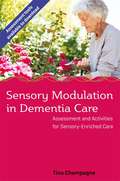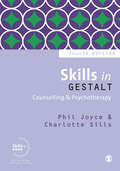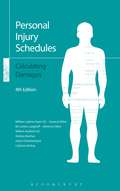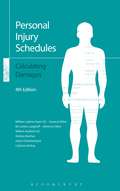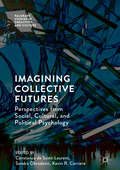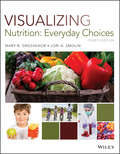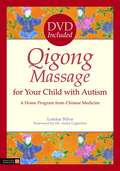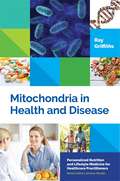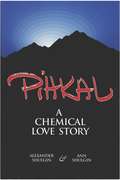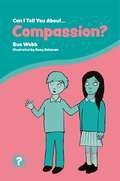- Table View
- List View
Rationality, Time, and Self
by Olley F. O. C. H. PearsonThis book provides a new argument for the tensed theory of time and emergentism about the self. This argument derives in part from theories which establish our nature as rational and emotional beings whose behavior is responsive to reasons which are facts. It is argued that there must be reasons, hence facts, that can only be captured by tensed and/or first-personal language if our behavior is to be by and large rational and appropriate. This establishes the tensed theory of time and emergentism or dualism about the self, given the physical body can plausibly be fully described non-first-personally. In the course of this discussion the book also clarifies and defends a notion of fact and responds to McTaggart’s paradox and Wittgenstein’s private language argument.
Moving into Residential Care: A Practical Guide for Older People and Their Families
by Colleen Doyle Gail RobertsMoving into care is a significant life event for older people and their families and often occurs at a time when other life stresses such as deaths of loved ones and health complications are paramount. This book directly addresses the psychological impact that move can have, and offers tips for making the transition as smooth as possible. Based on material from interviews with a wide sample of people who had recently moved into care and a review of existing literature about the process, the guide follows the whole journey from considering a move into care, making the move and settling in, offering advice on each step of the way. Case stories from people who have just made the transition help make this an approachable and accessible read for those about to move into care and a helpful tool for families and staff who will be assisting them.
Practical Zen for Health, Wealth and Mindfulness
by Julian Daizan Skinner Shinzan Miyamae Sarah BladenBringing the body-mind insights of Rinzai Zen from the mountains of Japan to the Western world, Zen master Julian Daizan Skinner and Sarah Bladen present simple meditation techniques to help achieve health, wellbeing and success. Taking the reader through the first 100 days of practice, the book then shows how to adapt the new learned techniques to the rest of your life. Including case studies at the end of each chapter to show how people's lives have been transformed through their meditation journeys, this is an accessible and practical guide to adapting Eastern meditation into busy Western lives.
Yoga for Dementia: A Guide For People With Dementia, Their Families And Caregivers
by Tania Plahay Martin GreenProven to enhance wellbeing, posture, breathing and sleep, and reduce anxiety and agitation, this programme shows how yoga can be adapted to benefit people with dementia. Based on the findings of a pilot therapeutic yoga programme for people with dementia in care homes, this book offers substantial yoga sequences, breathing exercises, meditations and mindfulness exercises for improving symptoms associated with dementia. It offers an innovative Reminiscence Yoga approach, which uses sounds, music, guided imagery and familiar actions to stimulate memories. The book demonstrates the many benefits of yoga for people with dementia, and describes the ways that each yoga exercise can be adapted for people of different abilities.
Teaching Empathy and Conflict Resolution to People with Dementia: A Guide for Person-Centered Practice
by Cameron Camp Linda CampThe way in which dementia is understood and treated is changing, with a growing focus on the individual's experience and person-centred approaches to care. Introducing a new model of dementia care that reflects on the role of a person with dementia within a community and their relationships, this guide for professional and family caregivers demonstrates how to facilitate positive relationships for peaceful living. By understanding the cognitive and physical challenges that older adults with dementia face, caregivers can practice empathic care that affords people with dementia increased freedom of expression and independence. Included here are techniques for conflict resolution that enable people with dementia to be active and self-initiating in times of distress and disruption. Looking at the basics of respect, empathy, and mindfulness, this book also provides hands-on training for employing these virtues in practice with a number of exercises to help achieve the goal of peaceful independent living.
Level 2 Health & Social Care Diploma DEM 201 Assessment Workbook: Dementia Awareness (PDF)
by Maria Ferreiro PeteiroThese short assessment workbooks are designed to be written into and let you generate all knowledge evidence for your Health and Social Care L2 Diploma. You will generate the correct evidence by filling in the subject-specific questions and scenarios. Summaries of what you need to know and on what you should plan to demonstrate when you are being observed will help you make further progress too. A mapping grid is provided the the L2 Preparing to Work in Adult Social Care, so that you can use these workbooks for that qualification too
Level 2 Health & Social Care Diploma DEM 205 Assessment Workbook: Understand the factors that can influence communication and interaction with individuals who have dementia (PDF)
by Maria Ferreiro PeteiroThese short assessment workbooks are designed to be written into and let you generate all knowledge evidence for your Health and Social Care L2 Diploma. You will generate the correct evidence by filling in the subject-specific questions and scenarios. Summaries of what you need to know and on what you should plan to demonstrate when you are being observed will help you make further progress too. A mapping grid is provided the the L2 Preparing to Work in Adult Social Care, so that you can use these workbooks for that qualification too.
Returning to the Source: Han Dynasty Medical Classics in Modern Clinical Practice
by Professor Z'Ev Rosenberg Ken Rose Dr Sabine Wilms Blair ThornleyChinese Medicine constantly refers back to its sources in order to initiate the new. Its source code is in the Han Dynasty medical classics, and in this handbook esteemed practitioner and educator Professor Z'ev Rosenberg shares the knowledge from his study of these classic texts and his experiences treating difficult cases. In the tradition of the scholar-physician commentaries, Z'ev Rosenberg comments on the Simple Questions that introduce the core principles of the Inner Canon; explaining how these inform his methodology of diagnosis and advising on how biomedical diseases can be retranslated into sophisticated Chinese medical diagnoses including patterns of differentiation, sequential diagnosis, synchronicity, season, climate and environment. He discusses how Chinese medicine can use unique diagnostic parameters to rebalance the landscape and chronobiology of the body and address the greatest clinical challenges of our time, including the contemporary epidemic of autoimmune disorders.
Diving Medical Acupuncture: Treatment and Prevention of Diving Medical Problems with a Focus on ENT Disorders
by Janneke Vermeulen Will MacleanWritten for acupuncturists and Chinese medicine practitioners, this book describes the medical conditions that can prevent, complicate or result from diving and other water sports, and provides effective clinical treatments. The most common problems experienced by divers - ear, nose and throat (ENT) disorders - can be effectively treated with acupuncture. Through in-depth knowledge of Western diving medicine, diving techniques and Chinese medicine, the author prescribes acupuncture diagnostics and treatment for these ENT disorders. Complete with anatomical diagrams and acupuncture point charts, this is a practical resource for acupuncture clinicians who deal with the issues associated with diving. Advice for patients is given at the end of each chapter, and is available as a handout in downloadable form.
The Woman who Fooled the World: Belle Gibson’s cancer con, and the darkness at the heart of the wellness industry (PDF)
by Beau Donelly Nick ToscanoBelle Gibson convinced the world she had healed herself of terminal brain cancer by eating a healthy diet. She built a global business based on her story. There was just one problem: she never had cancer in the first place. In 2015, journalists uncovered the truth behind Gibson’s lies. This hero of the wellness world, with over 200,000 followers, international book deals, and a best-selling mobile app, was a fraud. She had lied about having cancer ― to her family and friends, to her business partners and publishers, and to the hundreds of thousands of people who were inspired by her, including real cancer survivors. Written by the two journalists who uncovered the details of Gibson’s deception, The Woman Who Fooled the World tracks the 23-year-old's rise to fame and fall from grace. Told through interviews with the people who know her best, it explores the lure of alternative cancer treatments, exposes the darkness at the heart of the wellness and ‘clean eating’ movements, and reveals just how easy it is to manipulate people on social media.
Diving Medical Acupuncture: Treatment and Prevention of Diving Medical Problems with a Focus on ENT Disorders (PDF)
by Janneke Vermeulen Will MacleanWritten for acupuncturists and Chinese medicine practitioners, this book describes the medical conditions that can prevent, complicate or result from diving and other water sports, and provides effective clinical treatments. The most common problems experienced by divers - ear, nose and throat (ENT) disorders - can be effectively treated with acupuncture. Through in-depth knowledge of Western diving medicine, diving techniques and Chinese medicine, the author prescribes acupuncture diagnostics and treatment for these ENT disorders. Complete with anatomical diagrams and acupuncture point charts, this is a practical resource for acupuncture clinicians who deal with the issues associated with diving. Advice for patients is given at the end of each chapter, and is available as a handout in downloadable form.
Sensory Modulation in Dementia Care: Assessment and Activities for Sensory-Enriched Care
by Tina ChampagneUnderstand and assess the sensory needs of people with dementia, and learn how to implement sensory modulation-based approaches for enriched care. Drawing on the author's Sensory Modulation Program, this approach aids with self-organization and meaningful participation in life activities. Explaining sensory-processing issues specific to older populations, this book provides a downloadable assessment tool to help review individual sensory-processing patterns. It includes a range of sensory-based activities which can be carried out with people at all stages of dementia, both with individuals and in groups. The book also provides recommendations for modifying physical environments to make care settings sensory-enriched.
Skills in Gestalt Counselling & Psychotherapy (Skills in Counselling & Psychotherapy Series)
by Phil Joyce Charlotte SillsThis practical guide to the gestalt approach has successfully introduced thousands of trainee therapists to the essential skills needed in gestalt practice. The authors offer practical guidance on the entire process of therapy including setting up the therapeutic session, creating a working alliance, assessment and treatment direction, managing risk, supervision, adopting a research approach, and managing difficult encounters. The new Fourth Edition has been updated to include: Some implications of working in the twenty-first century, including working virtually Updated content on trauma An enhanced discussion of mindfulness and awareness New case examples and exercises Updated references and further reading
Skills in Gestalt Counselling & Psychotherapy (Skills in Counselling & Psychotherapy Series)
by Phil Joyce Charlotte SillsThis practical guide to the gestalt approach has successfully introduced thousands of trainee therapists to the essential skills needed in gestalt practice. The authors offer practical guidance on the entire process of therapy including setting up the therapeutic session, creating a working alliance, assessment and treatment direction, managing risk, supervision, adopting a research approach, and managing difficult encounters. The new Fourth Edition has been updated to include: Some implications of working in the twenty-first century, including working virtually Updated content on trauma An enhanced discussion of mindfulness and awareness New case examples and exercises Updated references and further reading
Personal Injury Schedules: Calculating Damages
by William Latimer-Sayer QcPersonal Injury Schedules: Calculating Damages covers in one single volume all that the PI practitioner needs in order to calculate damages in a personal injury case. It provides a guide to the assessment of damages and presentation of schedules. The emphasis remains on the practical application of the rules and principles involved, covering a variety of claims ranging from the small to the catastrophic. Defendants are also catered for, with a substantial chapter on Counter-Schedules. The book contains comprehensive and up-to-date analysis of the relevant principles and case law in a practical handbook style with valuable advice on presentation and strategy, complimented by a raft of precedents. Its key strengths are its clear and structured presentation and calculation of difficult items of loss with checklists, bullet points and tables offering immediate solutions for the busy practitioner, who needs accurate information on a daily basis in the courtroom or the office.This new edition is fully updated to take account of the following developments resulting from case law since the last edition:Fatal Accident Act multipliers: Knauer v MOJ [2016] UKSC 9;Pre-existing conditions: Reaney v University Hospital of North Staffordshire [2015] EWCA Civ 1119;Residual earnings discount factors: Billett v MOD[2015] EWCA Civ 773;Review of the highest court award ever made: Robshaw v United Lincolnshire Hospitals NSH Trust [2015] EWHC 923 (QB);Developments in the approach to interim payment applications: Smith v Bailey [2014] EWHC 2569 (QB);Recoverability of credit hire claims: Brent v Highways & Utilities Construction & others [2011] EWCA Civ 1384; Opuku v Tintas [2013] EWCA Civ 1299; Zurich Insurance v Umerji [2014] EWCA Civ 357; Sobrany v UAB Transtira [2016] EWCA Civ 28;Fatal accidents and incompatibility with the ECHR: Swift v Secretary of State for Justice [2013] EWCA Civ 193;Periodical payment orders: RH v University Hospitals Bristol Foundation Trust [2013] EWHC 299 (QB); Wallace v Follett [2013] EWCA Civ 146;Striking out dishonest claims: Fairclough Homes Ltd v Summers [2012] UKSC 26;Assessment of multipliers when not constrained by the Damages Act 1996: Simon v Helmot [2012] UKPC 5;Assessment of life expectancy: Whiten v St George's Healthcare NHS Trust [2011] EWHC 2066 (QB).
Personal Injury Schedules: Calculating Damages (PDF)
by William Latimer-Sayer QcPersonal Injury Schedules: Calculating Damages covers in one single volume all that the PI practitioner needs in order to calculate damages in a personal injury case. It provides a guide to the assessment of damages and presentation of schedules. The emphasis remains on the practical application of the rules and principles involved, covering a variety of claims ranging from the small to the catastrophic. Defendants are also catered for, with a substantial chapter on Counter-Schedules. The book contains comprehensive and up-to-date analysis of the relevant principles and case law in a practical handbook style with valuable advice on presentation and strategy, complimented by a raft of precedents. Its key strengths are its clear and structured presentation and calculation of difficult items of loss with checklists, bullet points and tables offering immediate solutions for the busy practitioner, who needs accurate information on a daily basis in the courtroom or the office.This new edition is fully updated to take account of the following developments resulting from case law since the last edition:Fatal Accident Act multipliers: Knauer v MOJ [2016] UKSC 9;Pre-existing conditions: Reaney v University Hospital of North Staffordshire [2015] EWCA Civ 1119;Residual earnings discount factors: Billett v MOD[2015] EWCA Civ 773;Review of the highest court award ever made: Robshaw v United Lincolnshire Hospitals NSH Trust [2015] EWHC 923 (QB);Developments in the approach to interim payment applications: Smith v Bailey [2014] EWHC 2569 (QB);Recoverability of credit hire claims: Brent v Highways & Utilities Construction & others [2011] EWCA Civ 1384; Opuku v Tintas [2013] EWCA Civ 1299; Zurich Insurance v Umerji [2014] EWCA Civ 357; Sobrany v UAB Transtira [2016] EWCA Civ 28;Fatal accidents and incompatibility with the ECHR: Swift v Secretary of State for Justice [2013] EWCA Civ 193;Periodical payment orders: RH v University Hospitals Bristol Foundation Trust [2013] EWHC 299 (QB); Wallace v Follett [2013] EWCA Civ 146;Striking out dishonest claims: Fairclough Homes Ltd v Summers [2012] UKSC 26;Assessment of multipliers when not constrained by the Damages Act 1996: Simon v Helmot [2012] UKPC 5;Assessment of life expectancy: Whiten v St George's Healthcare NHS Trust [2011] EWHC 2066 (QB).
Imagining Collective Futures: Perspectives from Social, Cultural and Political Psychology (Palgrave Studies in Creativity and Culture)
by Constance de Saint-Laurent Sandra Obradović Kevin R. CarriereIt is a commonly held assumption among cultural, social, and political psychologists that imagining the future of societies we live in has the potential to change how we think and act in the world. However little research has been devoted to whether this effect exists in collective imaginations, of social groups, communities and nations, for instance. This book explores the part that imagination and creativity play in the construction of collective futures, and the diversity of outlets in which these are presented, from fiction and cultural symbols to science and technology. The authors discuss this effect in social phenomena such as in intergroup conflict and social change, and focus on several cases studies to illustrate how the imagination of collective futures can guide social and political action. This book brings together theoretical and empirical contributions from cultural, social, and political psychology to offer insight into our constant (re)imagination of the societies in which we live.
Imagining Collective Futures: Perspectives from Social, Cultural and Political Psychology (Palgrave Studies in Creativity and Culture)
by Constance de Saint-Laurent Sandra Obradović Kevin R. CarriereIt is a commonly held assumption among cultural, social, and political psychologists that imagining the future of societies we live in has the potential to change how we think and act in the world. However little research has been devoted to whether this effect exists in collective imaginations, of social groups, communities and nations, for instance. This book explores the part that imagination and creativity play in the construction of collective futures, and the diversity of outlets in which these are presented, from fiction and cultural symbols to science and technology. The authors discuss this effect in social phenomena such as in intergroup conflict and social change, and focus on several cases studies to illustrate how the imagination of collective futures can guide social and political action. This book brings together theoretical and empirical contributions from cultural, social, and political psychology to offer insight into our constant (re)imagination of the societies in which we live.
Visualizing Nutrition: Everyday Choices
by Mary B. Grosvenor Lori A. SmolinVisualizing Nutrition teaches students to identify and connect the central elements of nutritional science using a visual approach. As students explore important nutrition topics, they are immersed in content that not only provides scientific understanding, but demonstrates relevance to their personal lives. Students are challenged and taught the decision-making skills needed to navigate the countless choices they will face in promoting their good health and preventing disease. Visualizing Nutrition's critical thinking approach with a solid underpinning of the scientific process empowers students to be knowledgeable consumers when faced with decisions about what to eat.
Qigong Massage for Your Child with Autism: A Home Program from Chinese Medicine
by Anita Cignolini Louisa SilvaQigong massage has been used in China for thousands of years as a means to achieve health and wellbeing, and to treat a wide variety of ailments. This book teaches parents a simple qigong massage programme that has been developed specifically for the needs of children with autism spectrum disorders (ASDs). With step-by-step instructions and an accompanying online content demonstrating the technique in action, this book offers parents clear guidance on how to adopt qigong massage into their child's daily routine successfully. The program is based around a core 15 minute massage that, when performed regularly, has been shown to greatly improve mood and behavior, sleeping patterns, and language and social skills. Also included is information on diet, advice on reading a child's body language during massage, and helpful progress checklists. Qigong massage is the ideal therapy for parents looking for an alternative way to strengthen the mind, body and sensory abilities of their young child with autism aged 6 and under.
Qigong Massage for Your Child with Autism (PDF): A Home Program from Chinese Medicine
by Anita Cignolini Louisa SilvaQigong massage has been used in China for thousands of years as a means to achieve health and wellbeing, and to treat a wide variety of ailments. This book teaches parents a simple qigong massage programme that has been developed specifically for the needs of children with autism spectrum disorders (ASDs). With step-by-step instructions and an accompanying online content demonstrating the technique in action, this book offers parents clear guidance on how to adopt qigong massage into their child's daily routine successfully. The program is based around a core 15 minute massage that, when performed regularly, has been shown to greatly improve mood and behavior, sleeping patterns, and language and social skills. Also included is information on diet, advice on reading a child's body language during massage, and helpful progress checklists. Qigong massage is the ideal therapy for parents looking for an alternative way to strengthen the mind, body and sensory abilities of their young child with autism aged 6 and under.
Mitochondria in Health and Disease: Personalized Nutrition for Healthcare Practitioners (Personalized Nutrition and Lifestyle Medicine for Healthcare Practitioners)
by Ray Griffiths Lorraine NicolleWhat are the functions of mitochondria in the human body? Why might they stop working properly and what can happen as a result? How can personalized nutrition help to optimize mitochondrial function and prevent or address chronic conditions? This innovative book explores the incredibly complex biochemical roles of mitochondria in health and disease. When healthy, mitochondria provide us with ninety percent of our body's energy. When unhealthy, this can lead to many chronic and degenerative conditions including cancer and Alzheimer's disease. This guide helps practitioners to identify the mitochondrial dysfunction underlying a wide range of health complaints, and provides inspiration about relevant and emerging mitochondria-supportive dietary regimes and nutrients to explore within the model of personalized nutrition.
Mitochondria in Health and Disease: Personalized Nutrition for Healthcare Practitioners (Personalized Nutrition and Lifestyle Medicine for Healthcare Practitioners)
by Lorraine Nicolle Ray GriffithsWhat are the functions of mitochondria in the human body? Why might they stop working properly and what can happen as a result? How can personalized nutrition help to optimize mitochondrial function and prevent or address chronic conditions? This innovative book explores the incredibly complex biochemical roles of mitochondria in health and disease. When healthy, mitochondria provide us with ninety percent of our body's energy. When unhealthy, this can lead to many chronic and degenerative conditions including cancer and Alzheimer's disease. This guide helps practitioners to identify the mitochondrial dysfunction underlying a wide range of health complaints, and provides inspiration about relevant and emerging mitochondria-supportive dietary regimes and nutrients to explore within the model of personalized nutrition.
PIHKAL: A Chemical Love Story
by Alexander Shulgin Ann ShulginBook I: The Love Story Tells the tale of a psychopharmacologist and his wife/research partner, and recounts decades devoted to the creation and investigation of psychedelic drugs as tools for the study of the human mind. Altered state experiences are explored in the context of intimacy. Book II: The Chemical Story Describes in detail a wealth of phenethylamines: • Synthesis and physical properties (in the format of the Journal of Medicinal Chemistry) • Structural correlates to human central nervous system activity • The dosages used and duration of effects observed • Commentary and speculation on why (for instance): Some which should have been active, are not Some which should not have been active, are Some are too toxic to determine activity And some have yet to be tasted
Can I Tell You About Compassion?: A Helpful Introduction for Everyone (Can I tell you about...?)
by Sue Webb Rosy SalamanMeet Sam. Like most kids his age, Sam loves sport. His class have arranged a special football match to raise money for a charity which helps children who are suffering. Sam finds out more about how the money is spent and asks his mum for this week's pocket money early, so he can donate to the charity. His mum says he does this because he's such a kind boy. But when he asks his teachers about it at school the next day, they say it's because he's compassionate. Sam now has lots of questions about what this means. What is compassion? How can we become more compassionate? And what effects - both good and bad - does being compassionate have? Join Sam as he learns answers to these, and many more, questions about this important part of character education.
